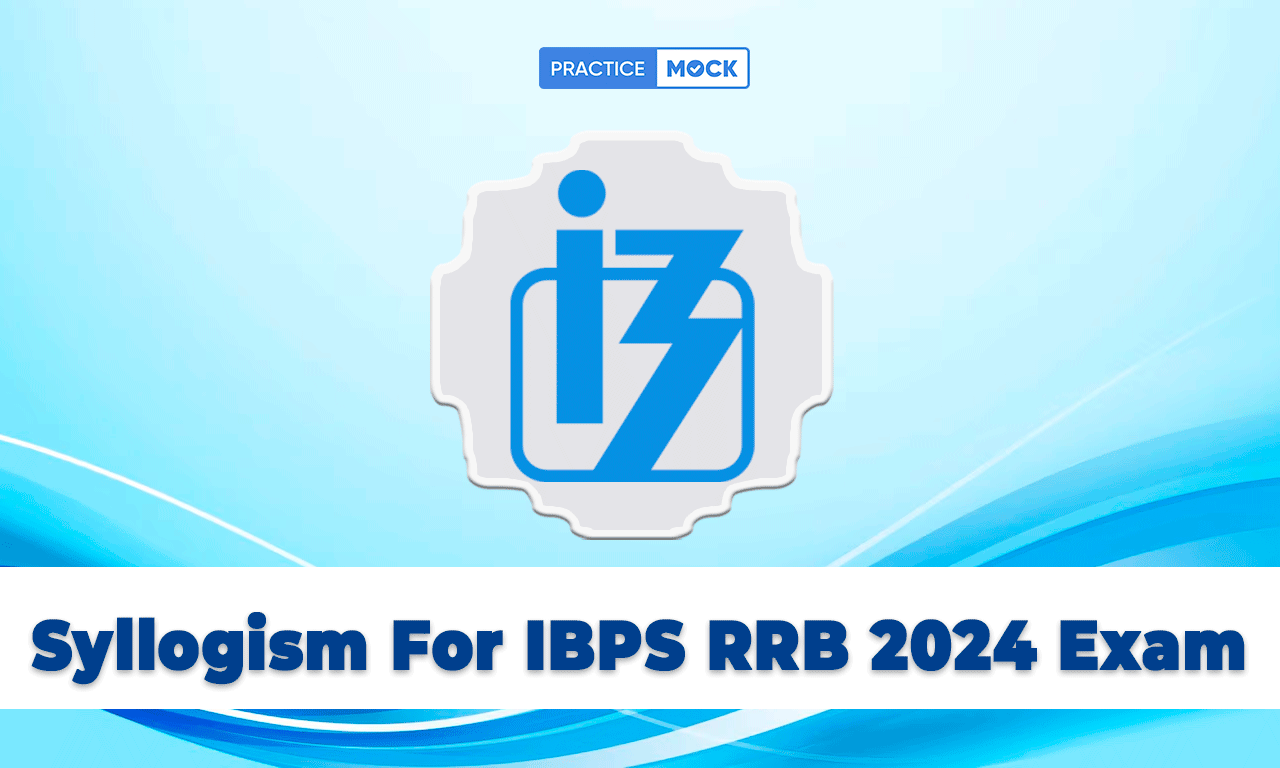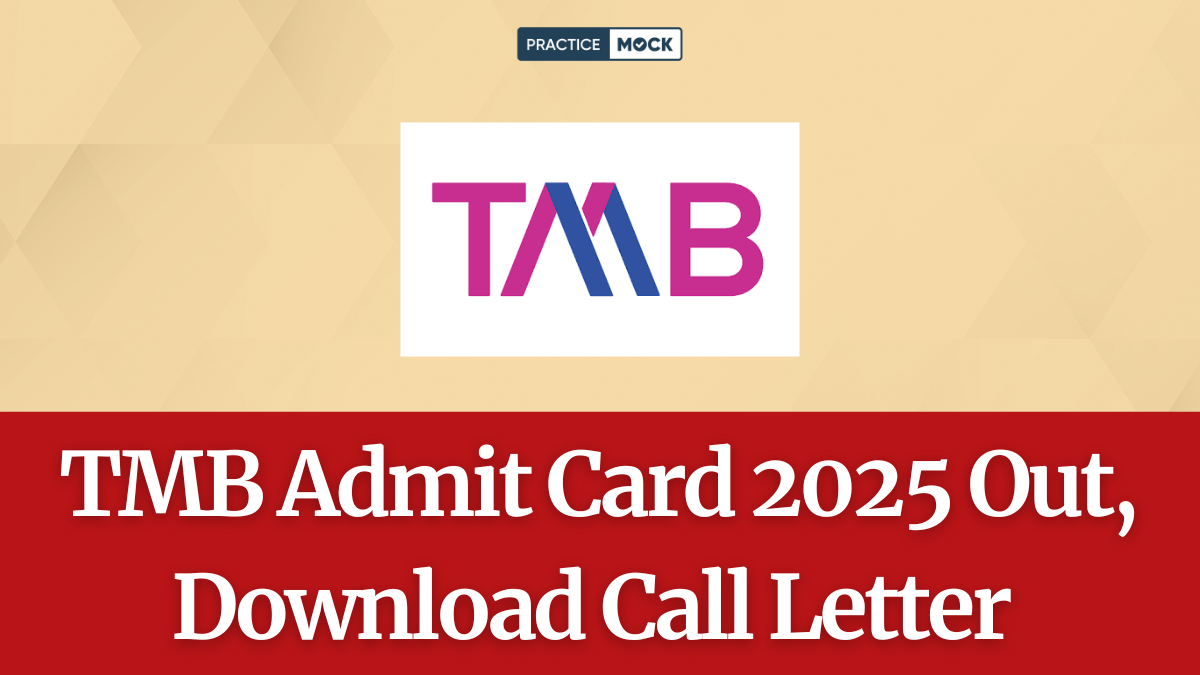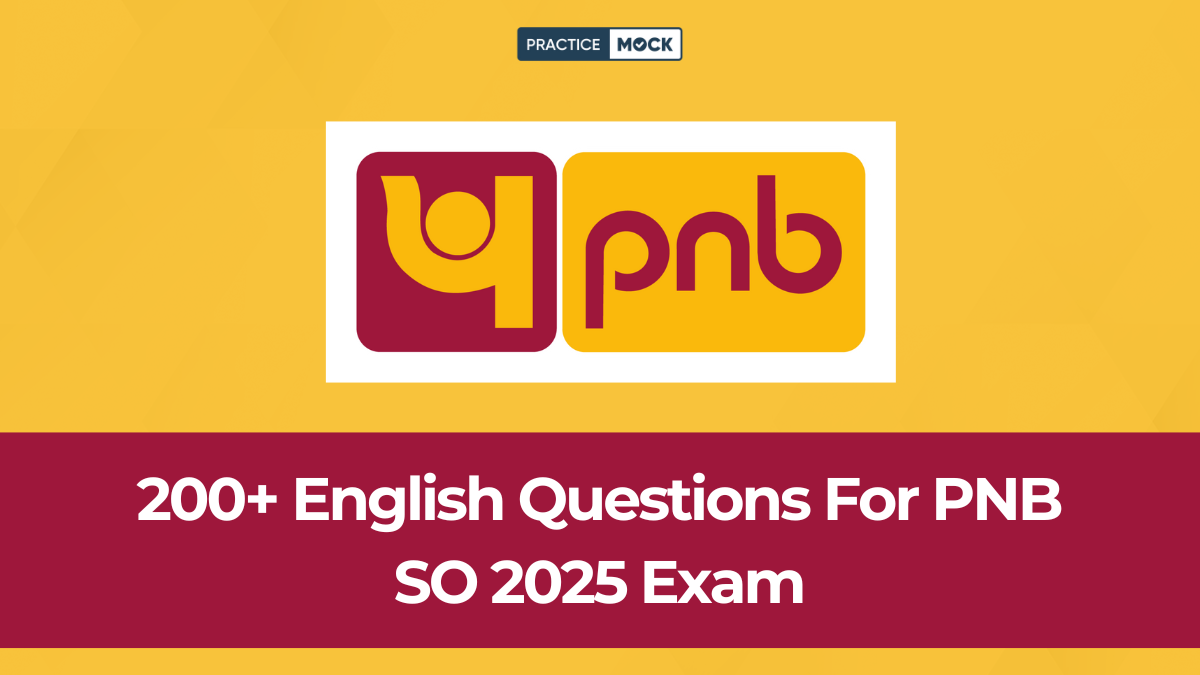Syllogism Questions For Bank Exams PO and Clerk


Syllogism For IBPS RRB Exam: Syllogism is a very important topic of logical reasoning for Bank exams. You will get 3-5 questions from this in both prelims and mains exam. To cover this topic, first understand the basic concepts of syllogism and then solve advanced questions of syllogism. It consists of some statements followed by conclusions, you have to determine which of the given conclusions is true/false or follows/does not follow. Syllogism basically checks the ability of a student to draw conclusions or inferences from the given statements. The statements and conclusions in a syllogism may or may not be logical, but while solving syllogism-based questions, you have to assume it to be 100% true.
Syllogism Questions for Bank PO/ Clerk
Question 1: In the question below some statements are given followed by two conclusions I and II. You have to take the given statements to be true even if they seem to be at variance with commonly known facts. Read all the conclusions and then decide which of the given conclusion definitely follows from the given statements, disregarding commonly known facts.
Statements:
No Copy are Pen
No Pen are Pencil
Some Pencil are not Crayon
Conclusions:
I. Some Pencil are Copy is a possibility
II. At least some Pen are not Crayon
A) Only conclusion I follows
B) Only conclusion II follows
C) Both conclusion I and II follow
D) Either conclusion I or II follows
E) Neither conclusion I nor II follows
Solution:
We draw the following figure:
From the figure, we get, only conclusion I follows.
Hence, option a.
Question 2: In the question below some statements are given followed by two conclusions I and II. You have to take the given statements to be true even if they seem to be at variance with commonly known facts. Read all the conclusions and then decide which of the given conclusion definitely follows from the given statements, disregarding commonly known facts.
Statements:
No Bulb are Fan
Some Fan are Cooler
100% Cooler are Light
Conclusions:
I. No Bulb are Cooler
II. At least Some Fan are Light
A) Only conclusion I follows
B) Only conclusion II follows
C) Both conclusion I and II follow
D) Either conclusion I or II follows
E) Neither conclusion I nor II follows
Solution:
We draw the following figure:
From the figure, we get, only conclusion II follows.
Hence, option b.
Question 3: In the question below some statements are given followed by two conclusions I and II. You have to take the given statements to be true even if they seem to be at variance with commonly known facts. Read all the conclusions and then decide which of the given conclusion definitely follows from the given statements, disregarding commonly known facts.
Statements:
Every Drama are Script
Some Story are Script
Only a few Film are Story
Conclusions:
I. At least Some Drama are Story
II. All Story are Film
A) Only conclusion I follows
B) Only conclusion II follows
C) Both conclusion I and II follow
D) Either conclusion I or II follows
E) Neither conclusion I nor II follows
Solution:
We draw the following figure:
From the figure, we get, neither conclusion I nor II follows.
Hence, option e.
Question 4: In the question below there are three statements followed by two conclusions I and II. You have to take the three given statements to be true even if they seem to be at variance from commonly known facts and then decide which of the given conclusions logically follows from the three statements disregarding commonly known facts.
Statements:
Every knife is cut
Only a few cut is deep
A few deep is blood
Conclusions:
I. Some cut is not deep
II. No knife is blood
A) Only conclusion I follows
B) Both the conclusions I and II follow
C) Neither conclusion I nor II follow
D) Only conclusion II follows
E) Either conclusion I or II follows
Solution:
Following figures can be formed from the statements:
Only conclusion I follows.
Hence, option a.
Question 5: In the question below there are three statements followed by two conclusions I and II. You have to take the three given statements to be true even if they seem to be at variance from commonly known facts and then decide which of the given conclusions logically follows from the three statements disregarding commonly known facts.
Statements:
Only fact is valid
Only a few fact is known
Mostly known is sure
Conclusions:
I. Some known can be valid
II. All fact can be sure
A) Only conclusion I follows
B) Both the conclusions I and II follow
C) Neither conclusion I nor II follow
D) Only conclusion II follows
E) Either conclusion I or II follows
Solution:
Following figure can be formed from the statements:
Since only fact is valid is given which means all valid can only be a part of fact so, both the conclusions do not follow.
Neither conclusion I nor II follow.
Hence, option c.
Question 6: In the question below there are three statements followed by two conclusions I and II. You have to take the three given statements to be true even if they seem to be at variance from commonly known facts and then decide which of the given conclusions logically follows from the three statements disregarding commonly known facts.
Statements
Only a few back is cover
Every cover is front
Some front is screen
Conclusions
I. All front is back is a possibility
II. Some cover is screen
A) Only conclusion I follows
B) Both the conclusions I and II follow
C) Neither conclusion I nor II follow
D) Only conclusion II follows
E) Either conclusion I or II follows
Solution:
Following figure can be drawn from the statements.
Since all back cannot be front but all front can be back so conclusion I follows. There is no direct relation between screen and cover so conclusion II doesn’t follow.
Only conclusion I follows.
Hence option a.
Question 7: In the question below there are three statements followed by two conclusions I and II. You have to take the three given statements to be true even if they seem to be at variance from commonly known facts and then decide which of the given conclusions logically follows from the three statements disregarding commonly known facts.
Statements:
Only a few toast is bread
No bread is milk
All milk is jam
Conclusions:
I. Some toast is not milk
II. All toast can never be jam
A) Only conclusion I follows
B) Both the conclusions I and II follow
C) Neither conclusion I nor II follow
D) Only conclusion II follows
E) Either conclusion I or II follows
Solution:
Following figures can be formed from the statements:
From the above figure it is clear all toast can be jam so, conclusion II does not follow.
Only conclusion I follows.
Hence, option a.
Question 8: In the question below there are three statements followed by two conclusions I and II. You have to take the three given statements to be true even if they seem to be at variance from commonly known facts and then decide which of the given conclusions logically follows from the three statements disregarding commonly known facts.
Statements
Mostly pile is dile
Only a few dile is cyle
All cyle is mile
Conclusions
I. All cyle is pile
II. Some mile being pile is not a possibility
A) Only conclusion I follows
B) Both the conclusions I and II follow
C) Neither conclusion I nor II follow
D) Only conclusion II follows
E) Either conclusion I or II follows
Solution:
Following figure can be formed from the statements
There is no direct relation between cyle and pile so conclusion I doesn’t follow. There is a possibility of some mile being pile, as shown in the figure so conclusion II doesn’t follow.
Neither conclusion I nor II follow.
Hence, option c.
Question 9: In the question below there are three statements followed by two conclusions I and II. You have to take the three given statements to be true even if they seem to be at variance from commonly known facts and then decide which of the given conclusions logically follows from the three statements disregarding commonly known facts.
Statements
Only a few Mark is Wrap
Some Wrap is Crop
All Crop is Acid
Conclusions
I. Some Crop is Mark
II. All Acid are Wrap is possibility
A) Only conclusion I follows
B) Both the conclusions I and II follow
C) Neither conclusion I nor II follow
D) Only conclusion II follows
E) Either conclusion I or II follows
Solution:
Following figure can be drawn from the statements.
All Acid can be Wrap as shown in the figure so, conclusion II follows.
Hence, option d.
Question 10: In the question below there are three statements followed by two conclusions I and II. You have to take the three given statements to be true even if they seem to be at variance from commonly known facts and then decide which of the given conclusions logically follows from the three statements disregarding commonly known facts.
Statements:
Only a few M1 is K2
Only a few K2 is E3
Some E3 is F4
Conclusions:
I. All E3 being K2 is a possibility
II. All K2 being F4 is a possibility
A) Only conclusion I follows
B) Both the conclusions I and II follow
C) Neither conclusion I nor II follows
D) Only conclusion II follows
E) Either conclusion I or II follows
Solution:
Following figure can be drawn from the above statements.
Both the conclusions I and II follow.
Hence, option b.
Related Blogs
For More Details Regarding the IBPS RRB 2025 Notification for PO and Clerk, candidates can click on the provided links. Important details of the IBPS RRB PO and Clerk, such as syllabus, exam pattern, cut-off, online application, and previous year papers, are provided.
IBPS RRB Clerk Other Article
| IBPS RRB Clerk Exam Pattern 2025 | IBPS RRB Clerk Syllabus 2025 |
| IBPS RRB Clerk Salary 2025 | IBPS RRB Clerk Cut Off 2025 |
| IBPS RRB Clerk Previous Year Paper |
IBPS RRB PO Other Article
| IBPS RRB PO Salary | IBPS RRB PO Exam Pattern |
| IBPS RRB PO Cut Off | IBPS RRB PO Syllabus |
| IBPS RRB PO Previous Year Question Papers |
Join our exclusive Telegram group where our experts are ready to answer all your queries, guide you in banking exam preparation, and give personalized tips to boost your success. Get access to real-time solutions, expert advice, and valuable resources to improve your study journey. [Click here to join now!]
Recent Posts
500+ Most Probable GA Question PDF for SBI PO Mains 2025 Exam
Here we are providing the 500+ Most Probable GA Question PDF for SBI PO Mains…
Which is the Hardest Exam of RBI, Grade A or Grade B?
Wondering which RBI exam is tougher? Check out a comprehensive comparison of Grade A and…
TMB Admit Card 2025 Out, Download Call Letter
In this article we have discussed details about the release of the TMB Admit Card…
AAI ATC Recruitment 2025 Notification PDF Out, Apply Online
The AAI has released the AAI ATC Recruitment 2025 Notification on its official website to…
AAI ATC Apply Online 2025 Out, Link Provided To Application Form
The AAI has released the AAI ATC Apply Online 2025 form on their official website.…
RBI Grade B Notification 2025, Check Recruitment Expected Release Date
Get all the information you need about RBI Grade B 2025 Notification, including Exam Date,…



